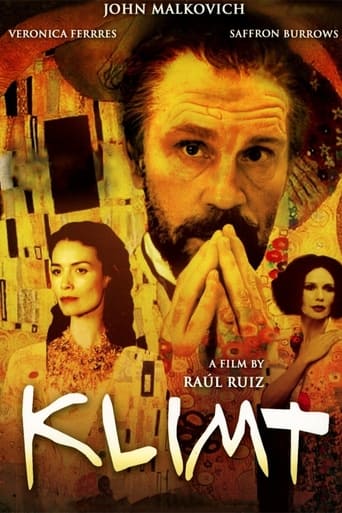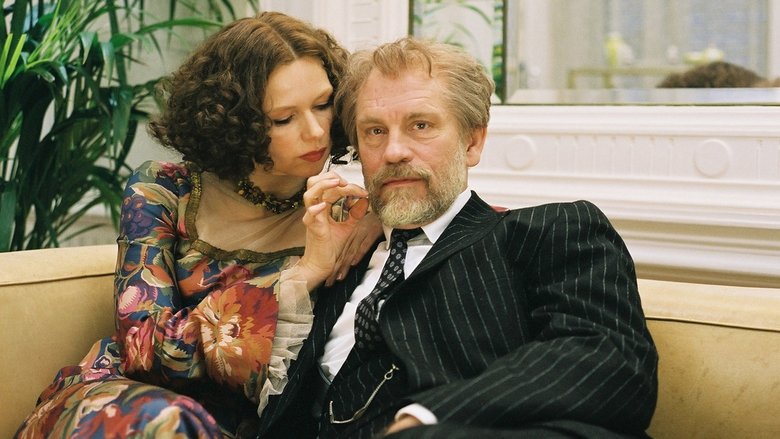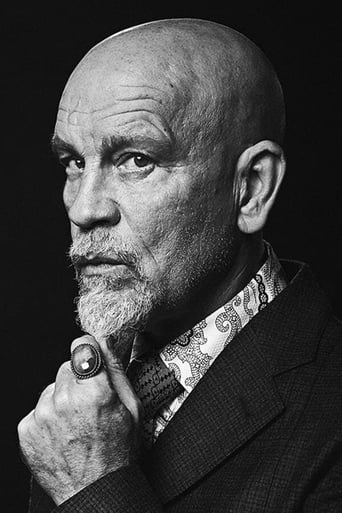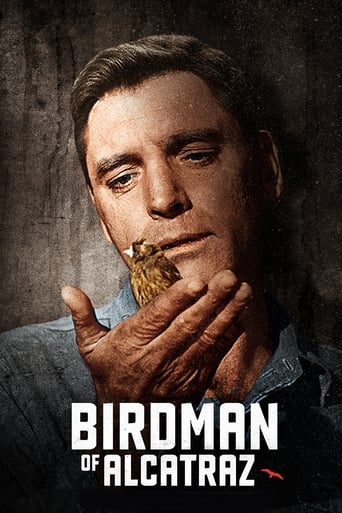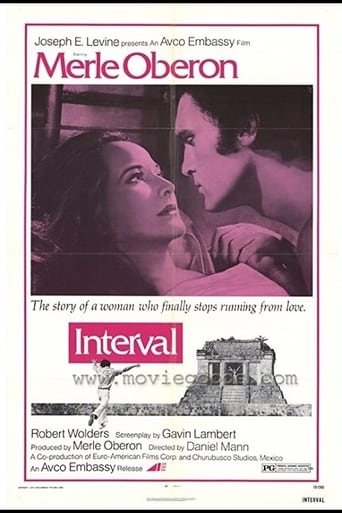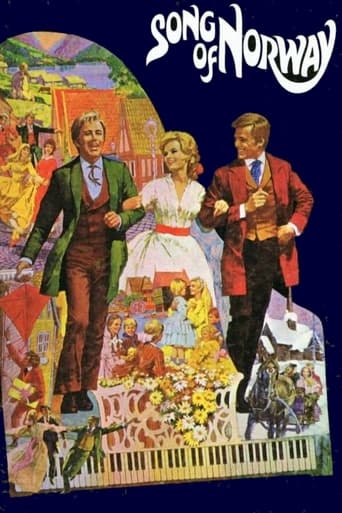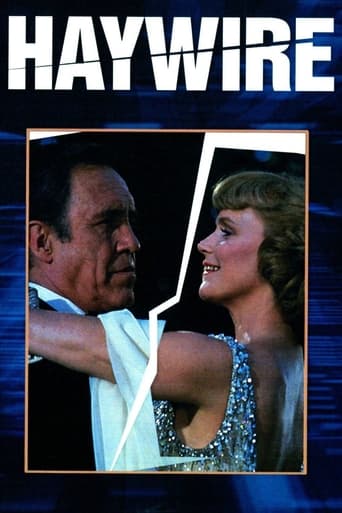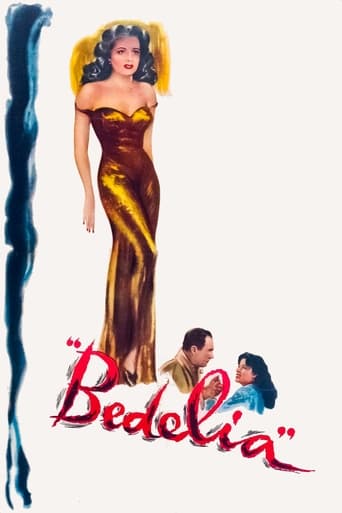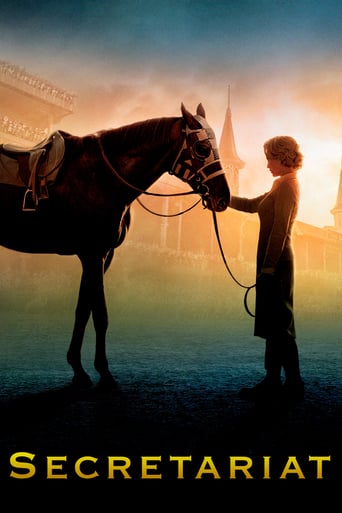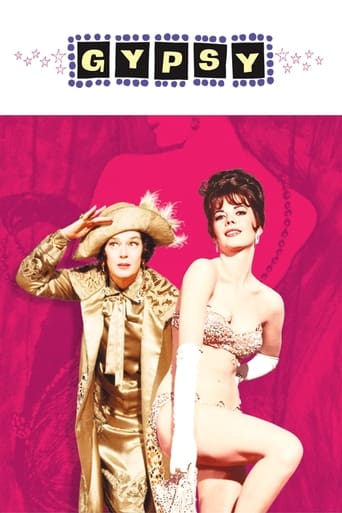Klimt (2006)
A portrait of Austrian artist Gustav Klimt whose lavish, sexual paintings came to symbolize the art nouveau style of the late 19th and early 20th century.
Watch Trailer
Cast
Similar titles

Reviews
Such a frustrating disappointment
Sadly Over-hyped
A great movie, one of the best of this year. There was a bit of confusion at one point in the plot, but nothing serious.
This film is so real. It treats its characters with so much care and sensitivity.
I enjoyed the movie. Though I would be hard pressed to write a summary of Klimt's life after watching the movie. He is a Viennese artist who painted from Fin de Siècle to just before the end of the Great War. That says a lot to the viewer right there. That an artist is self-centered, self-destructive, self-involved should always be self-evident. That came through clearly in the film. If the multitudinous and pulchritudinous naked women say anything, it should suggest that Klimt is dying at a relatively young age of syphilis. The syphilis may have affected his brain--hence he speaks to people who are not present. (I don't know, by the by, whether Klimt did in fact die afflicted with syphilis; the biggest defect of this approach to film biography is the reliance of the viewer to interpret accurately what is going on. A reliance best not--well, to be relied on.)So the movie presents an impression of the artist being an impression of being an artist. Not especially helpful if you have no idea of what is going on with the artist.Alas, most movies about artists are less than stellar. There are those who hate "Amadeus" or "Immortal Beloved" for the same reasons they hate this move; the technique of the film is nothing more than a celebration of film technique and not an exposition on the artist. Maybe FRIDA was one of the more successful films about an artist and exposition of the artist that does not fall into technique.If you have a need for movies that are linear than you may not like this; if you don't mind the Fellini Saytryricon approach to movies, then this may be the movie for you. And I thought John Malkovich did indeed look like Gustave Klimt. A dead on resemblance.
Gustav Klimt was a fascinating character. At a time when all modern art was going through one of the greatest transformations in history Klimt was slightly dislocated, or better said located at the wrong place. The elegant city of Vienna was living its last decades as the capital of the Austro-Hungarian empire, and as much as it has been a center of music and refinement for the previous 150 years, it never was the home of great creation in plastic arts. The revolution was taking place in Paris, with strong resonance in the Netherlands, in Germany and even in Scandinavia. Vienna was adopting a more refined and processed version of the revolution and the art created here was still more targeting to please rather than scandalize les bourgeois.It is not very clear to me what director Raul Ruiz intended to show in this film. It does not seem to be about the artist Klimt, as we get very little feeling about what his art was about, where it came from, how it related to his character or with his environment. We are not even very clear about the character Klimt - we see him involved with a lot of women, trying to be a charmer just to fall under the charms (and mirror games) of the wrong woman (or maybe more than one). We get a mosaic image of the Vienna and Paris before the war, seen from the perspective of the dying Klimt and of his friend Schiele (Nikolai Kimski is excellent) - but overall the exercise seems to be pretentious and empty of content.Or maybe it was about giving John Malkovich the opportunity to make another great role. He did not need it, and actually for the first time I felt the great actor to be a little bit tired. It was more 20 years after playing another big Austrian artist, and the reason was not only the age.
KLIMT:A Viennese Fantasy à la manière de Schnitzler is a controversial film, a montage of the elements of the art world and the sociopsychological tenor of the times of the infamous fin de siècle in Europe, a period greatly influenced by the writings of Sigmund Freud, thee novels and 'performances' of Arthur Schnitzler that focused on the emergence of the new views of sexuality. Being about the rise of sensualism in art and the subsequent Jugenstil (Art Nouveau) and Vienna Secessionist movement, writer director Raúl Ruiz (with aid from Herbert Vesely and Gilbert Adair) has painted a larger than life canvas of this fascinating period in art and in history in general and happens to populate it with significant character from the period. No, the film is not based on hard facts and yes, there are inconsistencies throughout. But that is of less importance than the allure of the period that very successfully comes through this film using the magic of light and the fluidity of the camera. Gustav Klimt (1862 - 1918) was a strange artist, a man who believed in a sensualist artificial religion and an artist who favored erotic imagery in his canvases. He was controversial in his time, yet today his paintings using gold leaf and silver leaf and design patterns of expression that defined Art Nouveau sell for many millions of dollars: his style is still imitated and he is still celebrated as the father of erotic art. The film opens and closes with Klimt (John Malkovich) submerged in healing waters in a rather stark hospital, attended by a nurse and his disciple, the equally sensational Egon Schiele (Nicolai Kinski, keeping his hands in the spread-finger style Schiele painted so often!). From this point bits and pieces of Klimt's bizarre life are explored, at times explained through imaginary conversations with his secretary (Stephen Dillane). His marriage, his 'affair' - or is it simply a manifestation of the influence of a muse? - with Lea de Castro (Saffron Burrows), his self indulgence in all things erotic (he is said to have has many affairs with Viennese women yielding a large number of children who bear his genetic puzzle), and his conflict with the Academy of Art, a sense of disgust with the current oeuvre of painting as sterile, and his prodigious output of paintings and drawing of the female nude - all are depicted with tremendous imagination here. The cinematography is as strange as the story it captures, using falling snowflakes in one scene to suggest the falling pieces of Klimt's gold leaf enhancement of his most famous works in others. The dialogue is at times raw and at other times superficial and the audience is begged to indulge in the fantasy that is being recreated. But the film stands well as an example of an art history period and John Malkovich makes a credible Klimt. This is more a film for art students and art lovers who are eager to explore the beginnings of Art Nouveau than a film for audiences eager for accurate biography. Grady Harp
I get it. It's a cinematic version of a 12-tone piece of music. You can enjoy the sounds, but unless you're privy to the artist's contrived intentions, it's a gobbledy-gook mess. Not the worst movie I've ever seen - the costuming and scenery/sets are lovely. I was really hoping I could enjoy the film DESPITE John Malkovich; really the only film I like the man in is Being JM because it pokes fun at his ridiculous persona that pervades every character he portrays.The only reason I kept watching was the hope of being thrown a lifesaver of a shred of a story. I will agree that Kinski and the exotic women of the movie are the brightest spots. I wished the movie had been "Schiele" and revolved more around Kinski. JM as Klimt is about as bland as stale toast.
